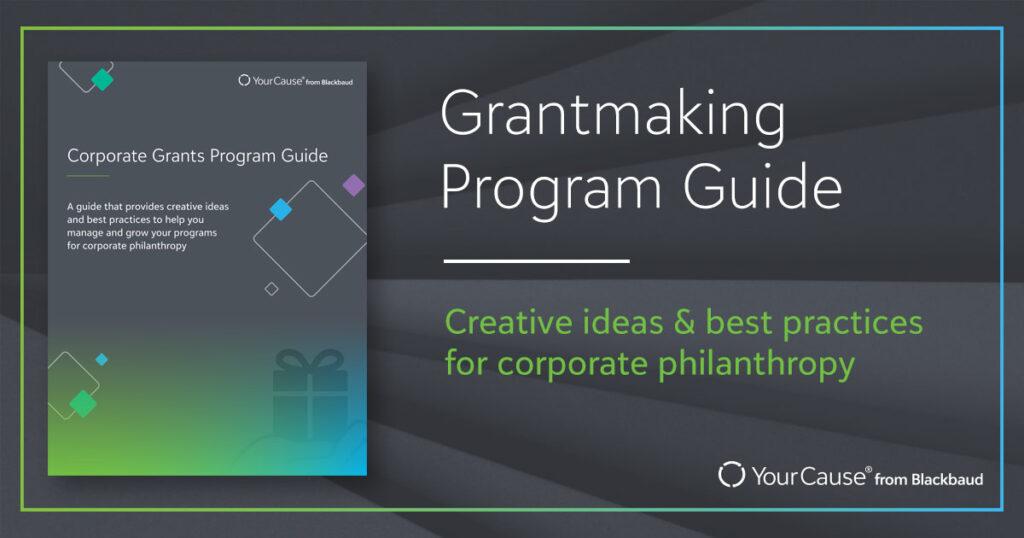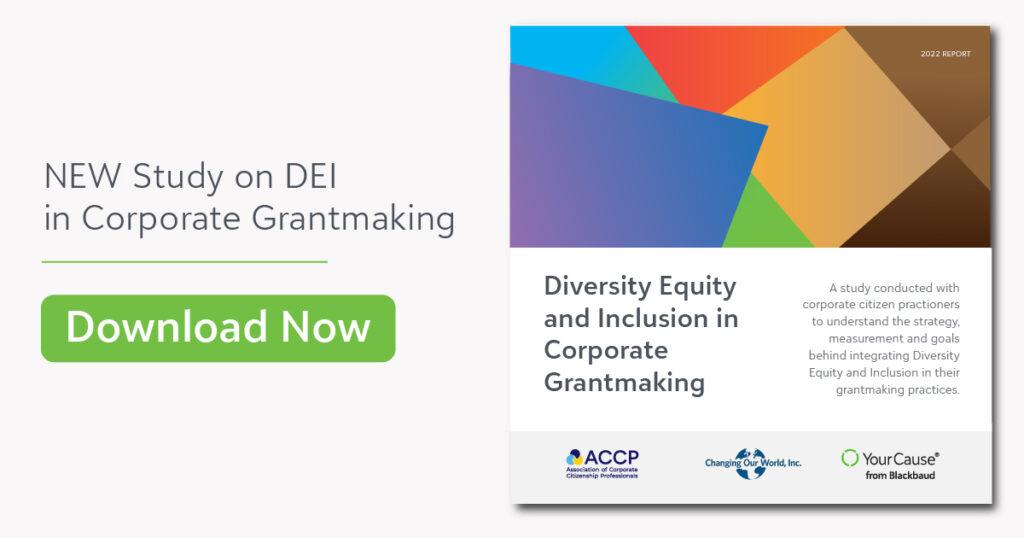Author: Arnav Lahiry
One of the most common elements of a corporate giving program is grants. These are financial contributions that are given by a donor to a recipient for a particular purpose or project. For companies, cash grants can be an important way to directly fund and support nonprofits in a cause area that aligns with stakeholders, as well as demonstrate a commitment to social responsibility. But this is not the only way of making a difference. Corporations can also leverage alternatives such as in-kind donations and sponsorships.
Impact Without Cash: In-kind Donations
In-kind donations are non-monetary contributions, such as goods or services that go towards a beneficiary. Common examples of in-kind gifts include food, retail items, office equipment, and professional services. These can be used by nonprofits to enhance their charitable impact or to free up money that would otherwise be spent on these goods and services to be reallocated to other aspects of the organization.
For companies supporting non-profits, in-kind donations can provide substantial opportunities to deliver impact. Many goods that are donated are second-hand or making use of surplus, offering greater flexibility when monetary donations are scarce. Aligning these gifts with items that are being replaced, or excess inventory that may go to waste, also promotes sustainability, on top of the social value generated. Additionally, services, as a form of in-kind donations, can leverage core competencies of a corporation’s workforce, such as skilled legal or accounting support, that meet some specialized needs of the nonprofit that may otherwise be unavailable or unaffordable.
Navigating Concerns
On the other hand, there are valid concerns with the distribution of in-kind donations. For example, the goods that companies are able to gift may be poorly matched to the immediate needs of recipients, and instead be influenced by what donors happen to want to dispose of. Separately, an influx of donated items can have an adverse impact on local industries producing similar goods, or disrupt the flow of more critical supplies, especially in the context of emergency disaster relief. It is also certainly possible that simply selling the same goods and donating them as cash could yield more value and flexibility to the nonprofit or cause area.
Communicating with nonprofits to identify their needs accurately and thinking through the possible negative externalities could help mitigate some of these concerns. Specifically, this can avoid the wasted resources associated with mismatched expectations and the transfer of goods that produce no use for charities and their communities. Setting standards within your corporate social impact procedures to coordinate donations with community needs, or checking if your nonprofit partners have gift acceptance policies, can go a long way in driving more impactful in-kind support.
Questions for CSR & Grants teams to consider:
- How can we communicate with nonprofits to identify their current needs?
- Do the goods or services we are donating align with these needs?
- Could selling the in-kind goods and donating the cash be more beneficial?
- Have we checked if our nonprofit partners have gift acceptance policies?
- Could our donated items have an adverse impact on local industries or disrupt the flow of more critical supplies (in the case of emergency aid)?
- How can these considerations be proactively incorporated into our in-kind giving process going forward to maximize impact?
Reciprocal Reward: Corporate Sponsorships
Corporate sponsorships are a type of support that companies provide to nonprofits for an event or project in exchange for some form of recognition or promotion. Common types of corporate sponsorships include monetary, in-kind donations, or media. Generally, sponsorships consist of the nonprofit recognizing the corporation through various materials including signage or branding on printed and digital event details. Companies could also get free meals or travel for their employees, in the case of a charity gala or fundraising event, for instance.
This arrangement creates mutual benefit to the nonprofit and the community they serve, as well as the company through increased brand awareness and reputation, or the potential to build relationships or reach new audiences. With this value in exposure and the intended outcome of boosting revenue, sponsorships can be an easier way of giving back to lock down with internal stakeholders and leadership. In fact, this monetary or in-kind support may often even come from a marketing department budget rather than the corporate grants fund.
Potential Pitfalls
However, corporate sponsorships do not come without risk. From a business perspective, there is no guarantee that the amplified exposure will result in greater revenues. This is notably the case if the sponsorship deliverables are not met. It is therefore essential to have a clear agreement on how the sponsorship will be communicated and what expectations and boundaries are in place.
Regarding the social impact of these contributions, there are challenges that nonprofits may face when securing and fulfilling corporate sponsorships. These include dealing with misaligned missions, navigating regulations around taxable income, and maintaining autonomy over the use of sponsorship funds in their charitable operations. Social impact professionals should do their best to respect such possibilities and effectively partner with nonprofits to ensure that powering impact is still top of mind.
Questions for CSR & Grants teams to consider:
- What are the deliverables for this sponsorship, and have expectations been clearly communicated and aligned?
- Is our desired increase in exposure and revenue on this sponsorship well-reasoned?
- How aligned are our mission and values with those of the nonprofit?
- Can we support the nonprofit in navigating regulations around taxable income?
- Do our nonprofit partners have the necessary autonomy over their funds to effectively deliver impact?
Tracking the Impact
With both in-kind donations and sponsorships, more complications arise when aiming to track the social impact. With non-monetary gifts, it can be difficult to accurately determine the fair market value of the goods or services donated, depending on the condition, quality, and demand. To measure the worth of gifts for reporting purposes, corporate impact teams employ valuation standards and techniques, often leaning on internal and external finance partners.
Corporate sponsorships bring along their own unique complexities, due to their inherent quid pro quo nature. When gaining in the form of business exposure or even free meals, travel, or perks for employees, corporate sponsors of nonprofits may struggle to justify claiming the full value of their financial or in-kind contributions as social impact. Instead, donation metrics could be limited to the amount that exceeds the fair market value of the benefits received.
To appropriately assess the impact of contributions, comply with legal standards, and navigate tax implications of in-kind donations and corporate sponsorships, tracking these details is crucial. CSR and grantmaking teams are considerably advantaged from transparent and comprehensive management of these programs, and technology can play a significant role.
GrantsConnect
GrantsConnect is a purpose-built grants management system that can help you manage programs of all shapes and sizes including monetary gifts, in-kind donations, and sponsorships. Currently, we track $23M+ in-kind donations across our clients’ programs.
Its user-friendly design allows our clients to efficiently manage their grant programs with tools like automated workflows, language and currency conversion, communication tools, the ability to manage multiple budgets and funding sources, and so much more.


